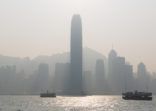Blackrock announced in late October that its iShares FTSE A50 China Index ETF is gradually changing into a physical ETF, while Enhanced Investment Products has recently closed seven synthetic ETFs, citing weak demand and high distribution costs.
A physical ETF holds actual securities of the underlying index and a synthetic ETF invests in derivitive products.
Among the 131 ETFs listed on the local bourse, which are denominated in Hong Kong dollars, 34 are synthetic in nature – seven from iShares which track A-shares indices, one from BOCI-Prudential Asset Management tracking the CSI 300 and the remaining 26 are cross-listing ETFs by Deutsche Asset Management.
Only six of these 34 synthetic ETFs have AUM above $20m, according to data from the stock exchange.
Synthetic downside
Synthetic ETFs tend to have a larger tracking error than physical ETFs.
The iShares ETF currently has about 60% of assets under management using synthetic products, or the derivative instruments called China A-Shares Access Products (CAAPs), to gain exposure to the A-Share market, according to a Blackrock spokeswoman.
Its rolling one-year tracking error, which measures how consistent an ETF follows its underlying index, was 3.88% as of the end of last month.
By comparison, physical ETFs tracking the same index – the CSOP FTSE China A50 ETF and the Bosera FTSE China A50 Index ETF – have a tracking error of 2.87% and 3.06% respectively.
Another issue is cost. The provider of synthetic ETFs is required to pay the collateral fees to the CAAP issuers, mostly banks, which cost roughly 2% a year, according to industry players.
Luke Ng, senior VP of research at FE Advisory Asia, said this charge is not reflected in the synthetic ETF’s ongoing charges nor in the total expense ratio, but in the product’s net asset value.
The Hong Kong regulators also tend to be stricter toward gearing-related ETFs, which might result in high expenses for synthetic ETFs, especially amid the weak demand for these passive products which make it hard for them to achieve economies of scale, he continued.
“In general a physical ETF is preferred because of its simpler structure, and it bears no counterparty risks [like the synthetic ETFs],” Ng said.
The Blackrock spokeswoman said the A50 ETF, in transition to be more physical, “will make the fund more efficient, more competitive and ultimately reduce costs for investors”, but the firm has not set a timeline for the fund’s conversion.
But Ng noted that during the transition process, tracking error might increase. The early redemption of CAAPs might incur higher costs because the products do not have a liquid and active secondary market, he explained.

















